I recently took a BYD Atto 3 for a test drive – the first EV I’ve ever driven. Here’s what happened on this momentous occasion.
But before I launch into this BYD Atto review, a little background on my motoring history and reasoning for a shift to an EV. Fast forward if you want to skip this.
My first car was a Holden JD Camira.
That was followed by a procession of mainly cheap second hand vehicles – sedans and vans (I miss vans!). The next stop for these vehicles was always going to be the wreckers given their ages and condition when I bought them. Then I bought a brand-spanking new Great Wall V240 4WD ute kitted out with a Flexiglass canopy, chunky bullbar, custom bash plates and a few other necessary trinkets.
No, it was actually a good vehicle for my purposes. I needed a 4WD at the time as I was spending much of it on my own out in the bush. As soon as I wasn’t any more, I got rid of it. The ute never let me down and I figured out that if it lasted at least 5 years I could put a match to it and still wind up ahead of those who had shelled out for what were much pricier 4WDs (and it lasted longer than that).
Next in line was my current vehicle, a new Mitsubishi ASX purchased in 2018. I’m told it’s a girls car. I’m ok with that and it has been a good, comfortable, economical and problem-free vehicle.
So, when reading this BYD Atto 3 test drive review, bear in mind.
- I’m not a car nut or particularly knowledgeable about them. A car is just a tool for getting from A to B, safely, reliably, economically and reasonably comfortably. If it looks good doing it, great.
- I don’t consider a car an extension of my p…ersonality.
- As mentioned, I had never driven an EV previously. I did have an electric quad for getting around my bush block years ago, but that doesn’t count.
- I avoid driving when I can while in the mega-city of Adelaide as many drivers here are utterly insane. There’s a lot of ice on Adelaide’s roads – and I’m not talking the frozen water variety.
- While the Atto 3 test drive was comparatively short, the research leading up to this point and since has been pretty long.
My Reasons For Considering An Electric Car
The up-front cost of an electric car is frightening. I never thought I’d consider purchasing a vehicle costing much more than what my ASX did.
But it turns out at the moment I can sell the 4-year-old very-low-k’s and very-well-cared-for vehicle for not much less than what I paid for it. There’s also an EV subsidy in South Australia, which I’m hoping will be around long enough for me to benefit from.
Assuming stars align, switchover to the Atto 3 will work out to cost me around the same as the changeover to the ASX did.
The sticker shock of an electric car (mostly) out of the way, there will be quite a bit to look forward to – such as avoiding the petrol pump and charging an electric vehicle using the 10kW solar system above my head and a dedicated EV charger (undecided on which at this point).
Our solar panels are currently sending a lot of output to the grid for just 10c a kilowatt hour feed-in tariff, and I also have a 5kW export limit. Self-consumption is the name of the game when going solar, and an EV will certainly help take care of that. Working from a home office means plenty of time for day-time charging.
Then there’s the comparative quietness and other little bonuses such as free rego for the first few years; and my lifestyle pumping less emissions into our already carbon-dioxide-soaked atmosphere.
There should also be some savings on servicing; although with the Atto 3 it won’t be as much as some other electric vehicles. BYD has a pretty strict servicing schedule, whereas it appears Elon Musk has sort of said “eh, whatever – do this, don’t do it” for Tesla vehicles and the warranty remains in place.
I had heard some scary things about insurance costs, but on checking with my insurer it only works out to be around $90 more a year for a comprehensive policy.
Another reason for heading down the EV path is my partner’s car – a Kia Cerato – is getting on. She covers far more kilometres than me; but we wouldn’t get as much for her car and it has some useful years left in it. The idea is we’ll share the Atto for a couple of years, then we’ll ditch the Cerato for another EV. Whatever that will be, it must feature V2H instead of V2L, which is what the Atto offers. But more on that in a bit.
Settling On The BYD Atto 3 (For Now)
We still don’t have a great range of electric vehicles to choose from in Australia thanks in part to a lack of fuel efficiency standards, which will hopefully be rectified soon.
As the Atto was at the extreme upper end of what I was prepared to pay, that left even less choice. The only other candidate in terms of what I was after was the MG ZS EV.
I also looked at options such as The Good Car Company, which offers second-hand electric vehicles brought in from overseas; some of which have reasonably low kilometres. I still haven’t totally discounted that possibility.
Atto 3 Specs ‘N Such
The Atto 3 is “COOL AND FUN, SMOOTH AND SAFE” – thus states the brochure.
Its dimensions are 4.45m (L), 1.875m (W) and 1.615m (H). It has a laden ground clearance of 150mm and weighs in at 1,680kg for the standard and 1,750kg for the extended range.
It’s a front-wheel drive with single electric motor generating 150kW of power and 310Nm of torque. BYD claims a 0 – 100kmh acceleration time of 7.3 seconds.
The Atto 3’s battery – which boasts BYD’s Blade Battery tech – has 49.92 kWh capacity for the standard model and 60.48 kWh for the extended. The battery chemistry is lithium iron phosphate; widely regarded as the most stable and safe common lithium-ion chemistry.
BYD claims a WLTP combined driving range of 345 km for the standard and 420 km for the extended. I expect that would be optimistic under real-world conditions.
Other features of the Atto, to name a few, well, a lot – but not all:
- A bunch of airbags
- Tyre Pressure Monitoring System (TPMS)
- Anti-Lock Braking System (ABS)
- Electric Parking Brake System (EPB)
- Electronic Stability Program (ESP)
- Traction Control System (TCS)
- Electronic Brake Force Distribution (EBD)
- Hill Descent Control (HDC)
- 360° view monitor (which is very cool)
- 2 radars at the front and four at the rear
- Stop & Go Full Speed Adaptive Cruise Control (ACC-S&G)
- Automatic Emergency Braking System (AEB)
- Front Collision Warning (FCW)
- Rear Collision Warning (RCW)
- Blind Spot Monitoring (BSD)
- Lane Departure Warning (LDW)
- Lane Keeping Assist (LKA)
- Rear Cross Traffic Alert (RCTA)
- Rear Cross Traffic Brake (RCTB)
- Panoramic sunroof – electric slide cloth screen inside the car that retracts when you want to use it, which for me would be never.
- Electric unlock tailgate, one touch open and close
- Electrically heated, adjustable and retractable exterior mirrors
- ACC and multi-function display
- 12.7cm digital instrument panel
- 60/40 split fold rear seats
- 6-way power adjustment for driver seat and 4-way for front passenger
- Driver and front passenger heated seats
- FM & DAB radio (what’s a radio?)
- Bluetooth – of course
- 35cm intelligent rotating touch screen
- Dirac HD sound, 8 speakers – yawn.
- Various USB – C and USB – A ports.
- LED headlights with follow me home.
- High Beam Assist (HMA) – a must have for me.
- Multi-color gradient ambient lighting.
- LED front and rear side reading lights
- Wireless phone charger
- 12V socket
- Keyless entry & Keyless start
- Portable card key
- 4-door window one touch up-down with anti-pinch
- Automatic single-zone air conditioner
- PM2.5 air filter
- Domestic 3-pin plug AC charger
- DC charging port – CCS 2 (Standard Range 70kW/Extended Range 80KW)
- VTOL (V2L) – enables you to power appliances at home or wherever using the vehicle’s battery
- Regenerative braking
- Camera front and back, which records each journey.
…and the list goes on. There’s a dizzying array of features and a bunch of acronyms I needed to look up. Some of these whizz-bang features are why the Atto 3 has a 5-star ANCAP safety score.
V2L And The Apocalypse
While some of the non-safety bling and bits are a bit gimmicky, a feature I find attractive is V2L, which stands for Vehicle-To-Load. The car is capable of powering appliances via a special cable with a plug on one end that connects to the Atto’s charging port, and a powerboard at the other end you can plug appliances into.
This setup offers up to 3.3kW peak output and continuous output of 2.2kW.
It’s not the most elegant of home backup energy storage solutions. But we’d be able to power some critical appliances (e.g. fridge, lighting, notebook) in an extended blackout for days.
Assuming we started out with a full battery, there would still be enough juice in the Atto to (maybe) escape the suburbs if said extended blackout is the result of four horsemen of the apocalypse rocking up to Adelaide. Actually, things were looking a bit that way on the weekend.
I heard BYD is also coming out with some Vehicle-To-Home (V2H) capable vehicles soon – and that’s where things will get really interesting. In our situation, it would do away with the need/desire for a home battery.
Learn about the differences between, limitations of and applications for V2L, V2G and V2H.
At The BYD Experience Centre
The BYD dealership car yard Experience Centre is located at 17 Main North Road, Medindie. It looked like it was still yet to get some finishing touches when we visited in mid-October.
We were a bit confused on arrival as the first car we saw was a Tesla. Elon may have been sussing out the competition.
I’m used to going into showrooms where there may be one or two other prospective buyers in there; but on this day there were at least 8 when we arrived. And they all seemed pretty excited. It had a vibe of:
When the showroom Experience Centre emptied out late in our visit, I was able to grab a decent pic of an Atto without anyone crawling all over it.
The standard colour, ski white, is really interesting. It’s not among the usual variations of white you see on cars and changes with lighting conditions. It’s hard to explain, but is (in my opinion) quite nice.
The interior is …different, with some odd/weird/unique touches such as the strings across the side-pockets and the funky white skin across the dash. But it all looks pretty easy to keep clean (important!).
The instrument panel:
Seats are comfy, look easy to keep clean and there’s plenty of room both front and back; even if this photo doesn’t seem to indicate it.
The cargo area is bigger than my ASX and there are two levels of storage – extra room beneath the floor that I expected to have a spare wheel/tyre, but there is none. Apparently this is an EV thing. I don’t think that space would fit one; so a bottle of tyre goo would be the go.
As for what’s under the bonnet, well.. stuff.
The Atto 3 Test Drive
When arranging this test drive, I asked the BYD guy1 that we go somewhere nice and quiet. But before we could take it for a test drive, we had to sign some paperwork, including a commitment to pay a $2,500 excess in the event of an at-fault bingle. The stakes for this test drive just got higher.
For the test drive, we were taken to what eventually turned out to be Dante’s 10th circle of hell – North Adelaide.
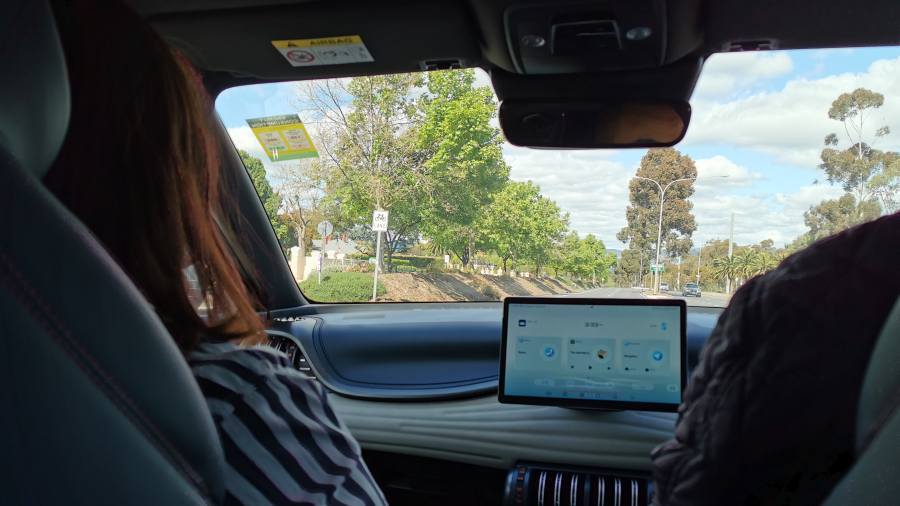
Don’t let this quiet road fool you. North Adelaide is a jungle!
Here’s one of the somewhat gimmicky voice control features we tinkered with on the way there:
I sounded more robotic than the Atto lady. She initially had trouble understanding my accent; a mix of Adelaide northern suburbs and New South Wales nasal twang when forced. You can take a boy out of NSW, but you can’t take NSW out of a boy. Anyway, an interesting feature, although it would have been easier just to reach across and turn the screen manually; which I assume could be done. However, there are a bunch of other voice commands that can be used with the Atto.
On arriving at our test drive starting point, it was my turn first. In this world of freakishly tall people (anyone over 5’6 1/4″), I of course needed to adjust the seat after the freakishly tall BYD guy vacated it. I’ve never experienced power seats before. They are also heated. What a bunch of snowflakes we’ve become.
The test drive started off nicely enough in leafy cul-de-sac that lulled me into a false sense of security. It morphed into a Mad Max scenario as the BYD guy directed me onto other busier roads. Then we were caught in a traffic jam for a bit caused by the aftermath of a vehicle that had been rear-ended (a hybrid oddly enough). When passing that ruined vehicle, the $2,500 excess for the test drive popped back into my mind.
Much of what happened during the drive is a bit of a blur given I was primarily focused on fending off every other driver out on the road out to get me – but that’s a good thing. I wasn’t dedicating much brain power to adapting to the Atto’s handling, acceleration and braking – because there was little to adapt to. It was all very smooth. Conversation during the drive was easy due to how quiet the Atto 3 was. I could clearly hear the gentle whimpering of the BYD guy, who was in the back seat reconsidering his career choice.
My Atto 3 test drive ended on Main North Road (!), circling back to the dealership. Even among what I perceived to be total and utter chaos external to the vehicle, I was more comfortable than I would otherwise be in a car I had never driven before in that sort of environment. While a bit larger (and a lot heavier) than my ASX, the Atto 3 didn’t feel like a tank. It was cool (had the air con on) and fun (well, my partner had a lot of fun laughing at me), smooth and safe, just like the brochure promised.
I reckon the BYD guy was pretty happy to get back to the dealership2, but it was then my partner’s turn to take it for a spin. She’s a fearless city-driving veteran – and to be feared. But at the wheel of the Atto, she became a totally different driver.
What is usually a white-knuckle experience for me as a passenger became very relaxed. This wasn’t just my partner being on her best behaviour. Her driving was simply better, smoother and she took to the Atto 3 like a duck to water.
To summarise, she was hooked and would have left the showroom with the car. If we had children, she would have happily handed over our first-born to take delivery there and then, and not shed a tear. She was chatting to her friends online about the Atto 3 that evening. I’ve never seen her so interested in cars before; and practically every day since, the Atto and BYD have been brought up in conversation.
Back at the BYD dealership, we looked at a few other features including the nifty 360-degree view monitor, which would be really handy for someone with my parking skills.
The Road Ahead
So, I’ve whacked down my fully refundable $1,000 for an Atto 3 pre-order and gone for a test drive. Estimated delivery is February/March 2023.
At this stage, I’m around 90% sure I’ll follow through – but I’m not signing the sales contract I was sent until much closer to delivery as the contract has some unsettling aspects. For example, with regard to price (which the contract says can change) and delivery date (which the contract says can change).
We don’t want to be locked into a buying a car that could potentially cost a lot more and not be delivered for 2 years. While I understand that’s highly unlikely to happen, the contract wording – as I understand it – allows for it to happen.
UPDATE: A commenter pointed out the contract terms note if the price goes up the customer has 3 days to cancel. I checked mine again and that is correct (excluding any change in any applicable statutory charges).
Still, we’ll wait for a bit and see what happens in terms of price and delivery timeframe.
BYD has had a few hiccups introducing the Atto in Australia; including a reduction in warranty, some to and fro on servicing costs and the recent kafuffle over the car lacking an accessible top tether child restraint anchor point in the centre position on the back seat (now resolved).
How Much Does An Atto 3 Cost?
At the time of writing, the Standard is $44,381, and the Extended $47,381. Three other colours are available, which will set you back an extra $700. On top of that are the usual on-the road costs. I opted for the Extended model in ski white and the drive-away price is noted as $49,931. But that’s before any subsidies/incentives.
UPDATE DECEMBER 9, 2022: The price of the Atto 3 has just gone up – $48,011 for the Standard and $51,011 for the Extended; quite a jump. This applies to any new orders of the Atto 3. An email from BYD Automotive last night stated:
“For clarification as an existing order holder your vehicle price will remain the same and the price increase will not apply to your order.”
BTW… BYD Atto 3 Warranty
BYD offers a battery warranty of 8 years or 160,000 kilometres; whichever comes first. I still need to review that more carefully and ask a few questions. The vehicle warranty is 6 years or 150,000 kilometres; again – whichever comes first (previously it was 7 years). *And*, there are some items with shorter warranty coverage – among them the AC/DC charging port assembly (3 years/60,000 kilometres).
Summing Up And Further Information
If you’re thinking about buying an EV, I think the Atto 3 is well worth taking for a test drive. While BYD still isn’t all that well-known in Australia judging by the blank looks I get at times when I mention the brand, the company is *huge* in China. BYD has been around for a long time and has had plenty of practice in the electric vehicle space.
For more information on BYD’s Atto 3 beyond the glossy virtual brochure and this not-so-glossy review, the owner’s handbook can be downloaded here and the warranty here.
For everything you need to know about electric vehicles, charging and how it all ties in with home solar power, check out SQ’s EV guides.

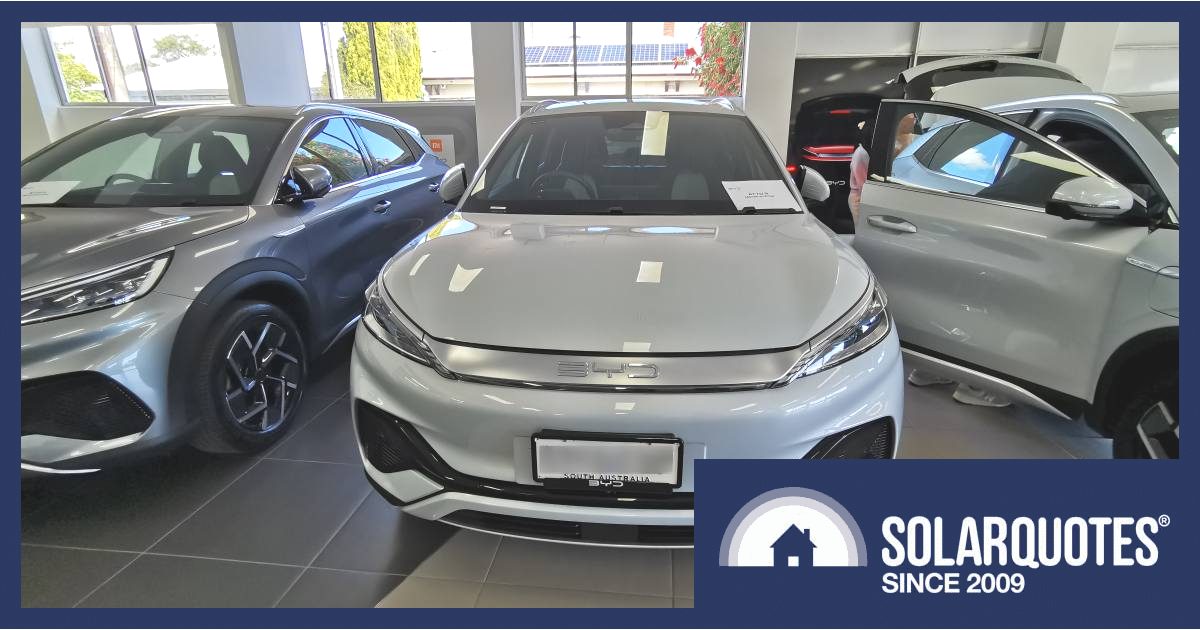

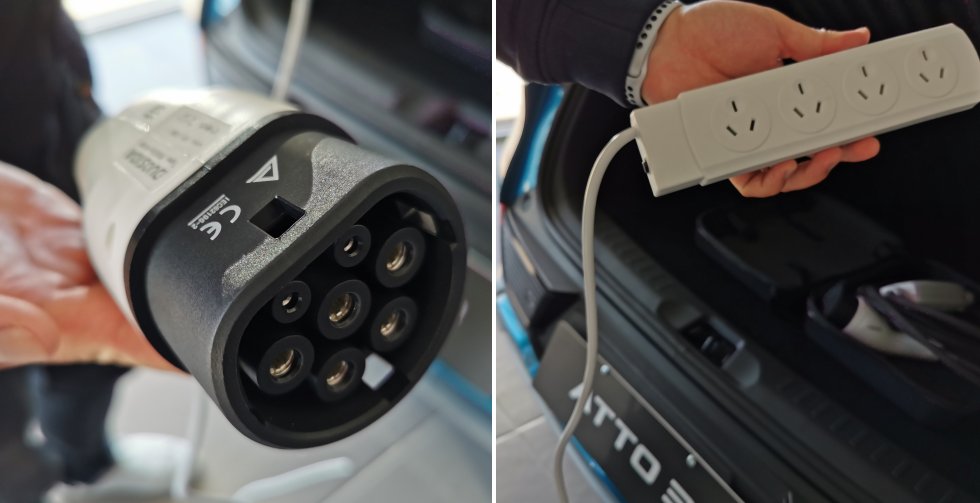
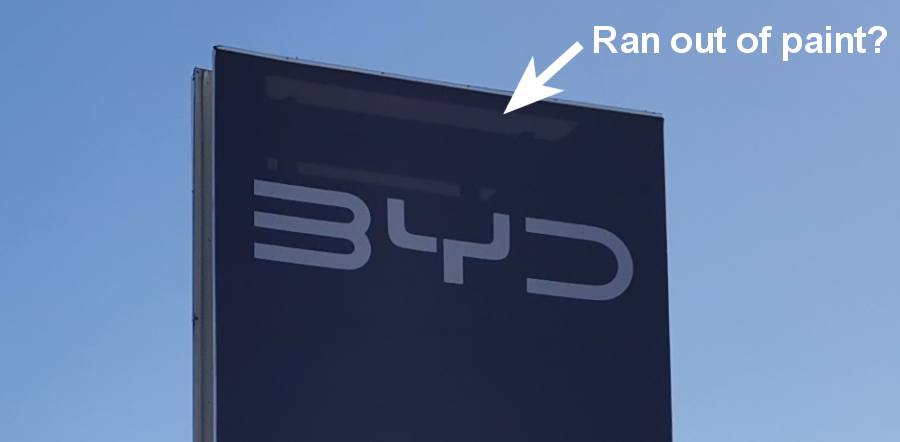

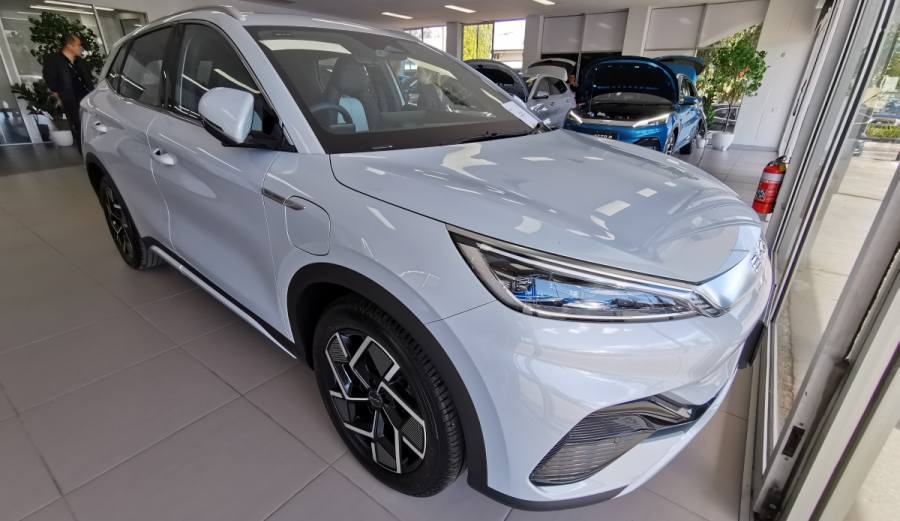
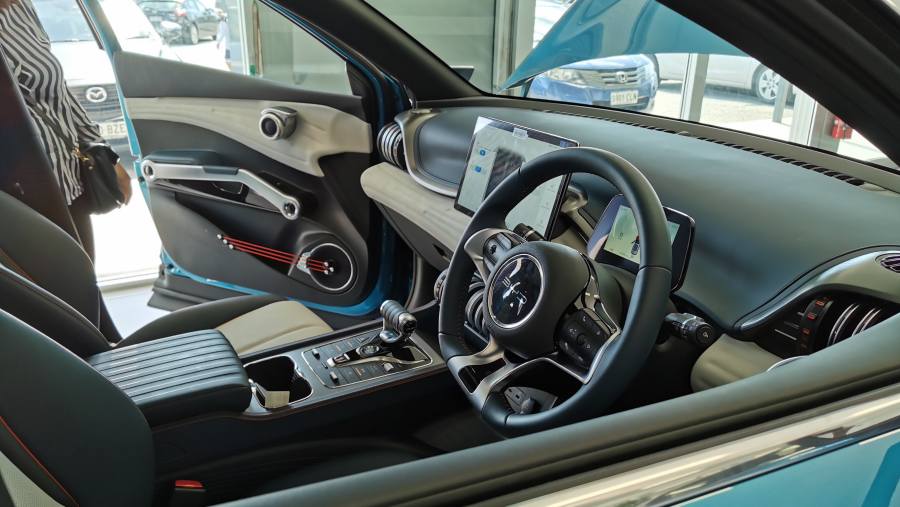
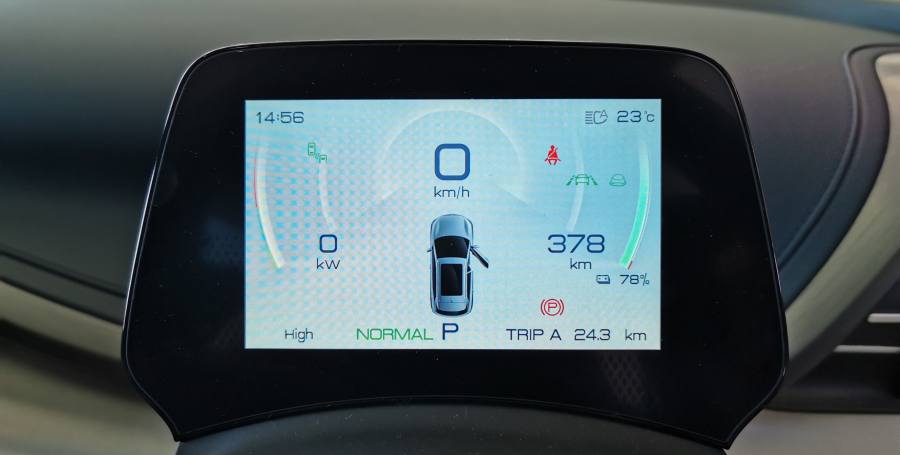
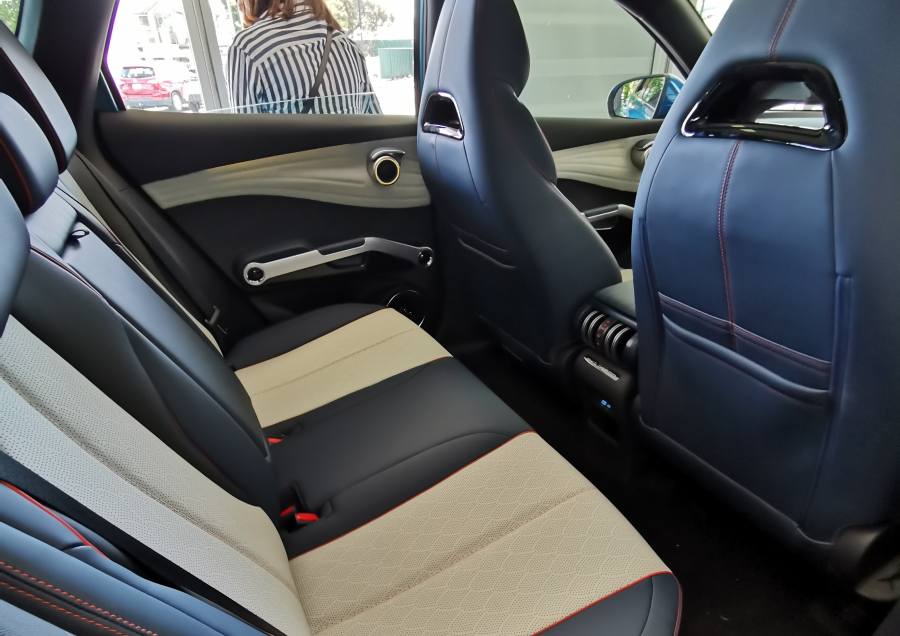
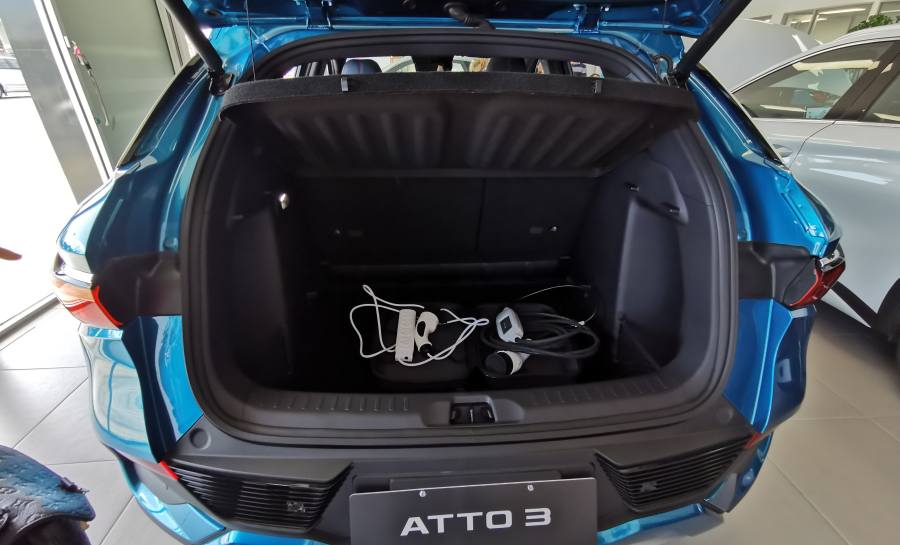
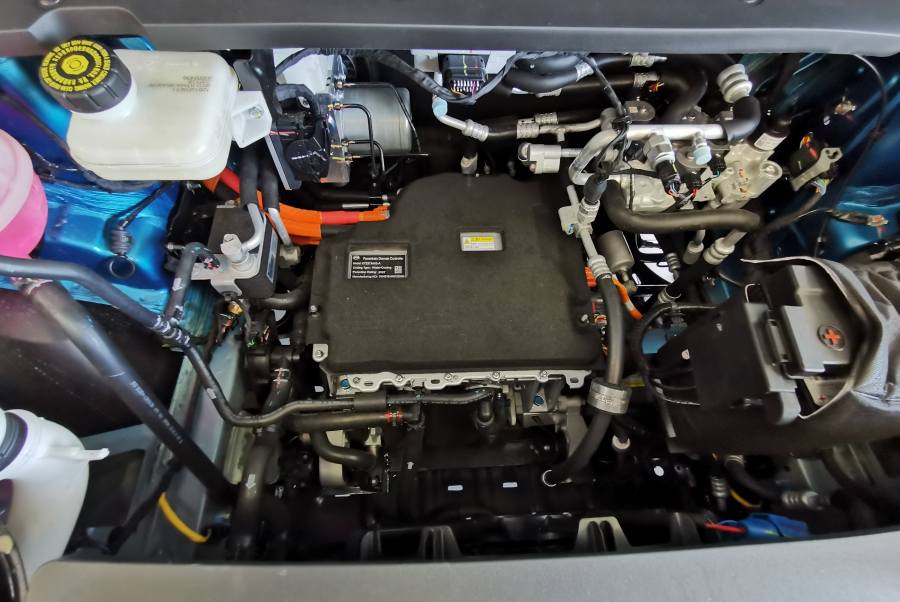
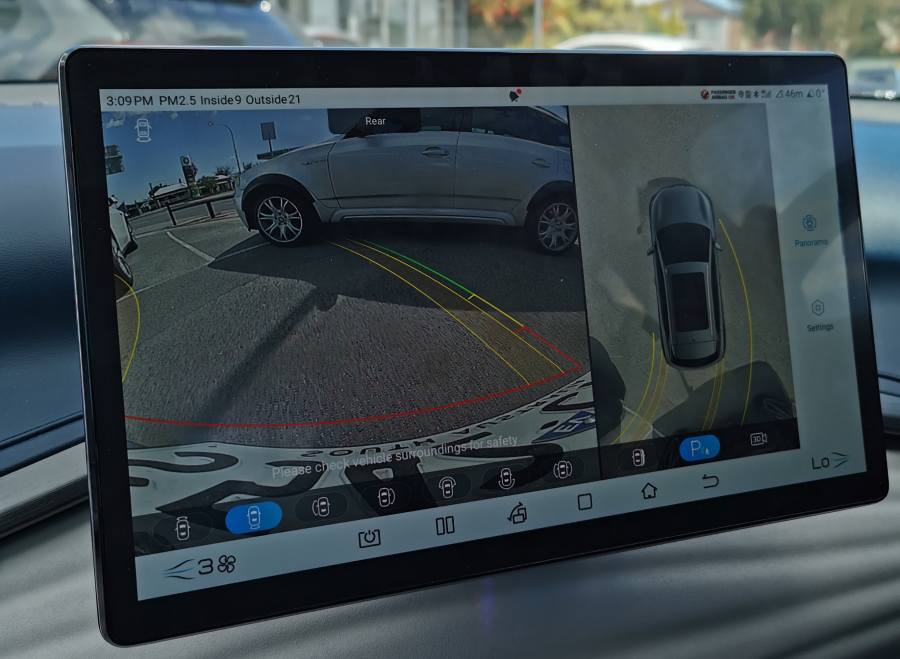
 RSS - Posts
RSS - Posts



Michael, I have a contract pending as well. The wording allows customers three days to reject the contract if the price increases.
It appears to be a standard car sales contract with some provisions that are not just inappropriate but impossible – e.g., the one that says the customer has inspected the vehicle, which is a bit hard since it is only manufactured to order! It makes me also think twice, if they can’t be bothered getting it right from the get-go.
It’s a very impressive vehicle in terms of quality/fit and finish and value for money with all that safety technology. OTOH it handles like a ship, and the regen breaking is pretty poor. Of course, no car is perfect.
* regen braking, not breaking — that comes when you stop and chill out
When you mention regen braking, do you mean as part of the “one pedal driving” settings for the accelerator pedal not being as ‘strong’ as other cars, or the overall experience of the braking?
I’m not ordering one due to:
1. Scary warranty exceptions
2. Punitive service costs for an EV
3. No Apple CarPlay and Android Auto
4. Compliance blunders and changes to warranty provisions pointing to questionable customer service and support
5. Only 80Kw charging. Where is a 320kw capable 800v electrical system to make this better for road trips.
1. Dunno about “scary”. I think sharks are scary. It feels like the bean-counters and lawyers got free reign on some of these terms. Definitely something to factor in, but I think more a case of ‘be alert not alarmed’.
2. “Punitive” also seems a bit of a stretch. They’re certainly a lot cheaper than my current ICE, so I’ll still be in front. I’m not 100% convinced that Tesla’s ‘we’ll look at it if there’s a problem’ approach is necessarily best-practice either. Still, a cost to factor in to TCO.
3. Coming December(ish) as far as I have heard. While nice to have, it doesn’t significantly impact the driving experience without it – for me, anyway.
4. Definitely been a bumpy ride for the early adopters, and the compliance thing seems it could have been sorted so easily, and hence very frustrating. However, my money is on them getting there in the end – there is too much at stake for what I think is a lot of pent up demand for EVs at this price point.
5. I don’t know of any other cars at the 50K price point that have that architecture available. If you have another lazy 30K+ lying around doing nothing then I think you might find something meeting that requirement.
the specs state apple car play and android auto are stock standard
My question: does the atto have am radio? In Darwin the only station I listen to is on AM (ABC RN) and between cities there is only am
A lot of people are confused by this. BYD use regenerative braking to emulate the retardation of a conventional car when you lift your foot off the accelerator. Both settings are fairly mild.
When you press the brake pedal the car still uses regen to slow the car, until friction brake blends in at low speed. The brake blending is very good, pretty much unnoticeable.
It’s not one pedal driving and doesn’t pretend to be. It emulates a conventional car.
I’ve also ordered this car, due mid march… I think. I’m getting solar panels put on next month. I was thinking of getting a battery as well but I thought I can just use the car to power things. I’m thinking of getting a Zappi charger because apparently it can know to charge from the solar panels… any thoughts on what charger to get?
Adam,
What inverter (and battery?) do you have?
Zappi is one of many chargers with a ‘charge only from excess solar’ mode that will work with any inverter. My personal experience of the first-generation Zappi was not good – but hopefully, the latest V2 version is better. One reason I don’t recommend Zappis is they are not OCPP compatible – so this will limit what it is compatible with going forward (think battery, retailer, demand management). Most chargers available in Australia are listed here:
https://www.solarquotes.com.au/electric-vehicles/compare-ev-chargers/
I also really like ChargeHQ – currently free but may move to a subscription model. Compatible chargers are on their website.
https://www.solarquotes.com.au/blog/charge-hq-interview/
Thank you Finn! I really appreciate your thoughts. I will look into it. Last time I spoke to the solar installer I think I’m getting a goodwe 6kw inverter installed with 7.4kW risen titan s 415W solar panels but I’m not sure if I should go for a bigger system and or a different inverter or different brands all together, very confusing for me at the moment but I know the brands I mentioned above are in your recommendation graph. I’m also getting 2 more quotes next year so we will see how that goes. I am happy to pay little extra for a better system of anyone can share their experience with me I’m very new to this stuff. No battery getting installed at the moment but I think I will need an hybrid inverter for that if I want one installed later on.
It’s blended braking is just OK. My old Outlander PHEV was much better – with the Atto 3 I can tell the difference between regen and friction. With the Outlander it was seamless. The Atto’s a great EV for the price.
We have returned to Adelaide to retire after 50 years in Toronto. Have owned a 2018, GM BOLT BEV for 6 years. I rekon my wife and I have touched the friction brake pedal 2 or 3 times in 6 years – other than rust the discs and pads look brand new. The BOLT EV has nornal regen braking that is quite strong and a paddle on left of steering wheel, that increases to about 80%, will almost stop in a few metres at the same time pumping lots of electricity back into the 66 KWHr Battery. Also holds stationary at intersections.
Service: Or rather NO Service. BEV’s do not need any service for at least 10 years. In six years,and according to the GM manual, I have had to replace the cabin air filter myself three times, $10 plus 10 minutes of my time! I have done nothing else, and no need to. Obviously items in common with ICE vehicles (Tyres, wiper blades etc) will need attention, but not necessarily at the dealer. I have no idea what BYD do (if anything) for service.
Hi Mark, Peter here, I’m Adelaide’s 2nd customer to take delivery of my Blue Atto 3 on the 16th of October., it’s an awesome Ev for the price. My brother was customer number 3 to take delivery of his white Atto 3 a few days later.
One thing I will point out is its a $141 rebate off the registration costs per year not free rego. The first year is a $141 rebate in year 2 and 3 it will be taken off the price of your registration renewal when it’s time to renew.
I have home solar and recharge for free as I took early retirement and home most days.
I driving in Eco mode and would easily achieve 420km, not that I run the battery flat but just to see once that it would have easily travelled 420 kms when I ran the battery down to 8 percent before recharging.
I only need to charge once a week.
Actually, the regen braking is pretty good – in that when you apply the brakes the Atto 3 uses the engine to slow the car down and only goes to the friction pads when necessary (typically extreme braking using both the engine and the pads or the final “crawling coming to a stop” part of the braking process where the engine would otherwise keep the car creeping along).
I think you might be referring to “one pedal driving” which is poor compared to other vehicles that have this feature.
When you lift your foot off the accelerator, there is only minimal slowing down of the car, even on the “high” setting. So you definitely need to use the brake pedal most of the time (like in a “normal” car) unless you can anticipate stopping well in advance.
However, using the brake pedal still utilises regen braking – it doesn’t go straight to the friction pads just because you depress the brake.
After 20+ years of driving, I am very familiar with using both an accelerator and a brake pedal and have found it difficult to adjust (properly) to “one pedal driving”, so the lack of this on the Atto 3 has not been an issue for me.
But some others do like this, so each to their own 🙂
Good to know! I thought only the Porsche can do that! Still, I don’t understand why they don’t offer one pedal driving.
Mark, thanks for the info re contract and pricing. I’ve taken another look at my contract and updated the article.
I’m not a lawyer but I’d be surprised if only allowing three days to pull out of the contract if they increase the price is regarded as reasonable under Australian consumer law.
Enjoyed your review, it was not the usual techno babble. It seem to focus on what most people want from a car. We are also a two car couple and currently have an EV and 4WD. The decision to buy our first EV a 2nd hand 2019 Nissan was done in early plague and on the web from a Melbourne Nissan dealer sight unseen. A great car, but a couple of minor issues, its range was just short with safe margin for a regular day country trip we do, so always required top up charge. We sold this great little car and got a SR MIC Tesla 3.
While the Nissan was a good town car the Tesla does this well and gives us. the comfort and range for longer country trips, usually without the need to top up charge. The NSW Gov gave a us a nice subsidy and the sale of the LEAF was ok so the change over price was manageable.
We charged both cars on our home solar using a single phase Zappi charger.
https://www.evolutionaustralia.com.au/myenergi-zappi-electric-car-charger
This works well and we have used Chargefox and Tesla chargers away from home both of which are great, but more needed. Most of our charging is done by our home solar, the LiFePO battery of the Tesla is nice because it is fine with 100% charging and we mostly charge with solar we cannot export or only get 7c/kW.
We have a 4yr old 10kWh BYD LiFePO battery which we are impressed with and would like V2L and V2G as a backup for longer rainy periods. So the replacement 4WD is likely to be EV, but nothing here yet. It would need to have 1000km range (500+km towing) and be able to tow 3.5t most hybrids cannot do this and no EV in Australia. So still waiting, but certainly do not regret going down EV path. They make a great form of safe, economical and nice to drive transport especially in regional NSW.
Good luck with you new EV and looking forward to see what you think when you have driven it for a few months.
When will we see solar rooftop customers get fair return on power sold to the grid i get 5c per kw and pay 35c per kw for power i buy they sell the power to to customers for 700 % or more than they give me as a rebate this is so wrong .i looked at getting a 10c per kw rate but the hike up the price they sell power to me for since getting solar i was always in credit as we are very frugal users not any more solar is still worth having although we are getting ripped off by power companies with our solar rebate batteries are not worth having due to cost but i have been looking at zendure superbase which is just coming on the market a lot cheaper than tesla power wall and other battery systems
Bob, If you put in a battery and then export at peak times when there is a demand for power you will likely get the same as it costs the power generators to actually produce the power not including any distribution costs.
The law of supply and demand is at work here and yes I do have solar PV and in WA we get 3c/kWh for feed in during off peak which rises to 10c/kWh during peak periods.
Would I like to get more for feed in yes but that would be a stupid decision by the power generators and would involve all non-PV power users subsidising me.
35c/kWh is the retail price for power not the production cost so you will never get that as it includes all the poles, wires and associated infrastructure plus 24 hour back up.
If you want to get a battery you will just about break even in 10 years if it is carefully selected based on current power prices and if the cost of power increases, then you will be in front.
If you put in a larger battery and use power carefully and disconnect from the grid you will save the daily supply charge and maybe off grid for most of the time but you would need some sort of backup in this scenario.
I am no fan of the dirty power producers but common sense is required if we are to move forward and storage is the burning question.
Thanks for a very engaging and informative article.
In reference to your brief lack of spare tyre discussion, you stated this is “an EV thing”. In 2007, I bought my 3rd (new) BMW, an E90 325i. Guess what? No spare tyre!!! The E90 was one of the first cars to introduce runflats. In 2012, I bought F30 328i, also no spare tyre. In 2019, I bought Mercedes W177 A250 4Matic – shock and horror, no spare tyre.
So you see, it’s not an EV thing at all. It’s a safety thing to a degree, it’s a cost cutting thing, it’s a weight saving thing and I’m sure there are other things associated with car manufacturers not including a spare tyre.
Hope you have many years of enjoyable driving in what promises to be a very capable, well priced EV. Cheers.
I bought an MG ZS EV seventeen months ago and could not go back to a smelly car. The EVs are just so smooth to drive. I charge mine with a Zappi charger but make sure the charger installer knows how you want to charge. Actually, think about how you are going to charge. I have mine set on the rapid charge and that takes 7 kw which is more than my 5 kw solar system can deliver. I also reserve my Powerwall to 100% so it does not suck out my Powerwall so the car is always at least partly grid charged. A coal burner as my oil company neighbour calls it.
Wondering how much power from the battery bank all the extra electronic gadgetry soaks up? This will of course reduce the distance a vehicle can travel on one charge…. and in a lot of places around Australia you can still travel 400 to 500 ks between fuel stations.
In many isolated outback areas, fuel supplies are provided by stations using power generated by a diesel generator only; mains power supply is not available. Will they be supplying power and charging points for EV’s as well?
Not much help with ‘saving the planet’ if this is going to be the case.
This car is not aimed at the market you are referring to. It is designed for the 80-90% of city dwellers who some regional touring.
The hard-core remote users will need to either stick with ICE, or go with PHEV for now.
If EV’s suitable for the 80% can be made available, for those that want them, it will at least start moving the needle a little more on “planet-saving”. Still a ways to go of course.
City commuting aside, I’d suggest Australia might be a special case when it comes to the type of EV on sale in the future. PHEV will probably pay a huge part in that – particularly since it’s been muted that some manufacturers are going to stop producing vehicles with ICE altogether in the very near future.
It’ll certainly be interesting to watch how transitioning to EV’s in general will occur. If the technology of EV’s continues to evolve at the current rate, one aspect will be; how is the people operating a local family garage down the road – used to repairing ICE – going to keep up with all the changes likely to occur with this new mode of powering a car.
Muted?….LOL – ‘mooted’ possibly a better word to suit the occasion.
You buy the car you need. Most Australians have a daily commute of 27 km or something like that. That’s what this car is for. If you want to go up Oodnadatta Track you probably need something a little different.
Waz – all the electronic “gagedtry” uses practically zero range. There are only two major consumers of battery capacity that contribute to range loss – the motor/s that power the wheels and the air con/ heater. The BYD uses an efficient heat pump as do Teslas. The air conditioner uses about a 1kW – so on a 3 hour drive you might use 3kWh which is somewhere between 18 – 22km. Doesn’t mean an EV is right for you, just correcting the misconception that things like screens have a meaningful impact range.
I agree the car can change one’s driving; I have a skoda DSG car and at times my driving is sub optimal because of the wait, wait – surge nautre of the drive train. Electric would be the very opposite of this (I imagine).
I very much hope that Australian’s will buy BYD cars, but then get them serviced only by independant mechanics. BYD can set the maintainance schedule, and they can set the price for that at the dealership, but they can’t invalidate the warranty if you use a proper (but non-BYD) mechanic to honour their service schedule.
Hi Simon,
I was excited to place an order for an ATTO 3, but I am starting to have cold feet due to the possibility of invalidate warranty if serviced at a qualified EV mechanic but non BYD approved. I am 300 Km out of Brisbane and it looks like My-Car (BYD Official) will be setup for servicing EVs only in 2 years.
Have you received or seen confirmation that as you say “they can’t invalidate the warranty”?
That’s also what I have been told but haven’t seen it on paper.
Appreciate you confirmation.
(I still might cancel the order on this base.)
John
Australia does not necessarily need long range vehicles. I have an MG ZS EV which has a range of 220 km effective and that is loads for a city car. My wife has a smelly car which can be used for the odd long trip. Even in the country, if one has trips of, say, 80 km per day to and from a regional city, an EV makes enormous sense even if it only has a 220 km range. I would not want a long range vehicle because I do not want to lug around a large battery which would very rarely get used.
There will be a huge demand for EVs in rural areas due to their lower operating costs. At least, that’s what I expect. Of course, improved charging infrastructure would help with this.
Hmmm lower operating costs….remains to be seen, but I doubt it!
I’ve been around long enough to know that people, particularly in the motoring trade, will always find ways to make up for lost revenue in repairing vehicles – somehow!
“BYD has a pretty strict servicing schedule”, I will try to get to the bottom of this.
To me a huge advantage of BEV’s is NO service schedule. I have been driving a GM BoltEV for almost 5 years, (in Toronto Canada) and according to the manual, service means I have to replace the $10 cabin air filter ever two years, or have a mechanic do it for bit more.
I do feel sorry for the motor mechanics who are now going the way of the blacksmith, but we can’t stop progress, and we need a healthy planet for our children.
Now we have returned home to Adelaide, I see EV’s are twice the price of NA.
I was the seventh owner of a BYD ATTO 3 Extended Range south of Sydney. It is brilliant and I can’t recommend an ATTO 3 enough. Put your deposit on immediately!!! 🙂
VTOL
I installed a AC transfer switch in my switch board on my lighting and fridge circuits only. I only have LED lights throughout.
You have to disable the security anti theft first on the vehicles settings before you can power up appliances. This works fine when connecting loads directly to the vehicle. Unfortunately I have been unable to achieve the same success through directly switching to the main switch board. The vehicle has built in safety and recognises some sort of imbalance or over load and does not work. I also installed ZJ Beny charger and am having issues there too with DLB(dynamic load balance) for PV array charging.
Hi Vaughn, I’d be interested to hear more about the challenges you’re having with the Atto 3’s V2L/VTOL, and the ZJ Beny. I’m booked in to have an AC transfer switch installed early next month; and the ZJ Beny is on my EV charger shortlist.
With the V2L cable, did you make any changes to it; or are you using an extension cord from the Atto cable’s powerboard to the inlet in your switchboard?
The Atto now comes with an upgraded larger cross sectional cable. So rather than ruining that I suggest getting a sparky to organise a new lead. I could assist if you are on the Sunshine Coast QLD.
Be aware of the voltage drop.
I suspect it’s a grounding issue. The car will see the neutral and ground tied together on your main switchboard. But the house ground will be different from the vehicle ground which is floating. That voltage differential trips the safety circuit. You need some way to tie the vehicle ground to the house ground. In contrast when you plug an appliance directly into the powerboard it doesn’t care about ground unless it has ground fault detection – eg another EVSE. Even then it only cares if neutral and ground are tied together which they probably are.
All sorted.
Bought a different brand changeover switch and was able to rectify the neutral issue.
Be aware however of the 216V supply from the vehicle.
Hi, i know the atto 3 can charge 7kw on single phase. Now, I’m thinking of getting a wallbox pulsar plus 3 phase 22kw charger for my home. On their website it says 11-22kw. If I get this installed at my house, 1- would it be able to charge the atto 3 at 7kw. 2- if it does, will it do any damage to the car? The reason I want to get a 3 phase 22kw charger is that in the future I might get another car with higher charging capabilities. Thank you!
“If I get this installed at my house, 1- would it be able to charge the atto 3 at 7kw. ” yes
“2- if it does, will it do any damage to the car?”no
A 22kW three phase EVSE can deliver 7kW on a single phase. The AC charger is actually built into the car and it negotiates the charge rate with the EVSE. It’s always a good idea to future proof.
We took delivery of a BYD Dolphin on the weekend. It has all of the safety features of the Attos 3 in a slightly smaller package. It just received a 5-star safety rating from ANCAP.
Delighted that it came with a V2L cable – just plug it into the charging port and it supplies up to 10A at 240VAC.
Have owned an Atto 3 for about 8 months now. Our first new car. Our last from BYD.
Unlikely to ever purchase another vehicle from this shambles of a company.
Customer Care know little about the product they are supporting and have repeatedly given wrong instructions when I could not find a solution in the handbook.
Have an issue with service centre staff not following up on a problem for us atm, and it seems the age old “ignore them and they might give up” approach is the go to with this lot.
Currently arguing with one of their Service staff, that parts falling off a new car, leading to damage are a warranty issue. Apparently he doesn’t consider bits falling off and parts breaking a “defect or fault”, this being his definition of a warranty.
It is not like we bought an ikea flat pack car and failed to tighten screws.
If you do buy one of these stay clear of MyCar for you services as BYD staff have tried to argue the issue we have was caused by their service and therefore not covered. When you book a service on the BYD web site it can lead to a MyCar.
Great Car. Shit company.
Really sorry to hear you had a bad experience for soemthing that is as big an investment as a car. Do you think a BYD would be ok if you had a mechanic you knew already, who could keep the car serviced to keep the ar in warranty? Or the car itself is too difficult to use without better support, with too many (I hope) minor problems?
I do want BYD to succeed but in the end I might stretch my finances and go Tesla. Eventually.
If other BYD service managers are going to be like the one I am dealing with, warranty after service with other than BYD could be challenging. Considering this one is being difficult about a problem probably caused by MyCar that they have set up booking with and call “Authorised Service”, you could have to waste a lot of time on any warranty claim.
Not sure there is a good understanding of consumer law in the company.
Car is not that difficult to use main issue we have had is dash settings changed by service staff at MyCar. They could not tell us how to change this back because “the high voltage mechanic doesn’t speak English and we don’t know anything about them”. That is from staff at MyCar.
Customer Care then gave 3 sets of wrong instructions on how to change display back.
There should be at least an hour long hand over process and some supporting material after each of the continual updates.
As to drivability / usability, try to have a long talk to a few owners and a long drive of one. We find ours comfortable and well appointed.
If you are going to be stressed by occasional, sudden, strong steering corrections by the computer in response to something that is not there you might want to consider other cars as well. Has happened twice. Both times, it decided there was something in the lane next to us when I tried to change lanes.
As I said before we like the car; however, the company, training of staff and the structure it uses is dodgy.
In effect “Lane Keep Assist” is required by NCAPs for a 5-star rating. The test protocols try to reduce false actions. I am not suggesting this is your case, but the computer needs to know if the driver intends to change lanes by operating the turn signals. If not it assumes the lane crossing is unintentioanal.
BTW Lane Departure Warning (just an alert) has been found to result in unexpected crash reductions – this may be due to drivers using the turn indicators more often for lane chnages (to avoid the alert)!
I have found the BYD Dolphin computer is a little slow detecting turn signals. I need to operate them earlier than I used to.
I own an Atto 3 as well. Great car. Not so good customer care. Hoping nothing goes wrong with the car otherwise I know there will be long waits and no answers